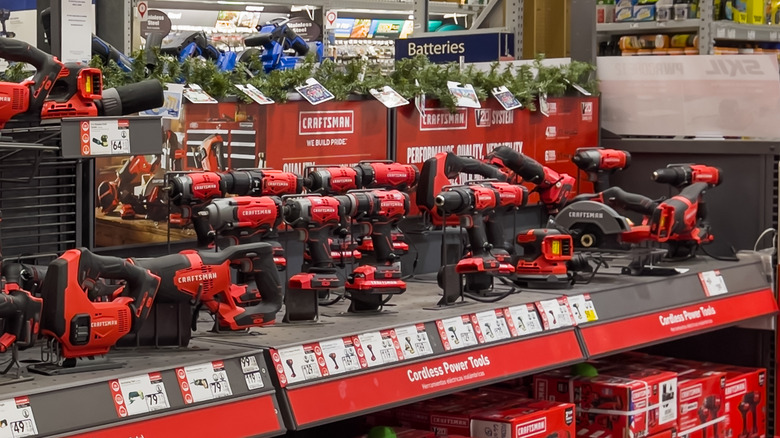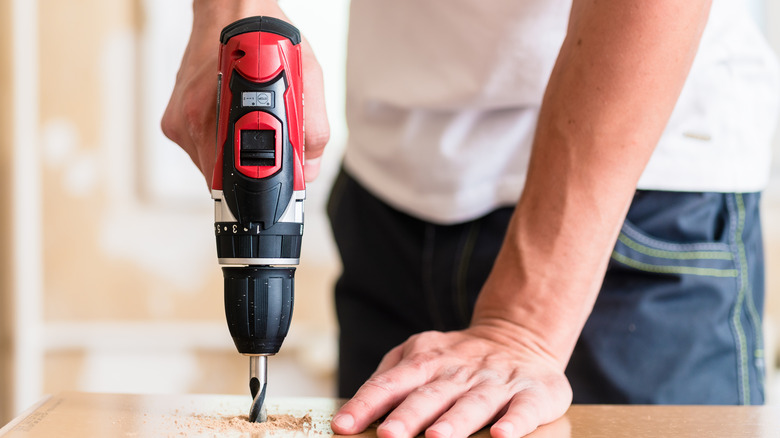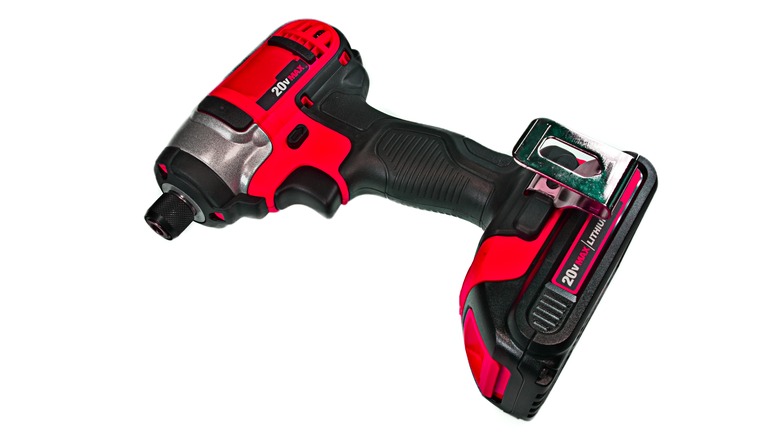Craftsman Impact Driver Vs. Drill: Which Tool Better Suits Your Needs
Craftsman is one of the world's oldest and most well-regarded tool-making companies. It's currently owned by Stanley Black & Decker, but its original owner, Sears, still maintains a limited license to the brand. The company is most well-known for its hand tools, but Craftsman also makes a wide variety of power tools. The Craftsman impact driver and drill aren't exactly known to be the highest-quality options on the market. They've had some mixed reviews in recent years. That said, they are both still widely regarded as exceptional budget options for weekend DIY enthusiasts.
A good drill and impact driver can make fantastic additions to any workshop. Those who aren't overly familiar with drills and impact drivers might be a little confused about the difference between these tools and what each is used for. They can look pretty similar at a glance. They're both rotary tools that are primarily designed for jobs related to securing fasteners. They are used in very different situations, however, and using the right tool for the job can make your home projects go a lot smoother. Here is a breakdown of what each of these tools does so you can determine which of them best suits your needs.
When to use the Craftsman Drill
There are several design elements that separate the Craftsman drill from the company's impact driver. To start. The emphasis with a drill is on speed and torque adjustment. The Craftsman V20 ½-inch Cordless Drill/Driver has a 15-gear clutch that allows you to set how much torque the drill turns with before it gives out. This allows the user to have more precise control over the power of the drill's rotation so that they don't accidentally over-tighten fasteners or strip screws while removing them. There is also a separate drill setting for drilling holes.
Drills have much more utility than impact drivers since they are useful for drilling holes and driving fasteners. In fact, many home DIYers get by just fine without ever needing an impact driver. This is primarily due to the clamping mechanism that drills use for gripping bits. Like most drills, the Craftsman Drill/Driver has an adjustable chuck, allowing them to grip bits in various sizes. This makes it possible for the tool to grip thousands of different drill bits, fastener-driving heads, and even some more eclectic extensions like cleaning brushes. This is why, if you can only afford one tool, you'll probably want to get the drill/driver kit first.
When to use the Craftsman Impact Driver
Impact drivers are much more specialized tools, but they still make for a worthy addition to any workshop. They're different from drills in a few key ways. They're typically more compact and include a quick-release clamp that works exclusively with bits that have a hexagonal shank. The loss in versatility from this style of clamps is a trade-off for extra stability and security.
But the most important difference is in the way the rotation mechanism works. While drills simply spin, impact drivers have a built-in mechanism that 'hits' the chuck similarly to tapping a wrench with a hammer to knock loose a stubborn bolt. This, combined with the higher torque found in tools like the Craftsman v20 Brushless RP ¼-inch Impact Driver, allows them to drive fasteners with a lot more force than a standard drill. This can dramatically cut down on the work time for construction projects that involve installing or removing a large number of long fasteners. It can also come in handy for screws that get stuck or that have to be driven through hardwood or other dense materials.


